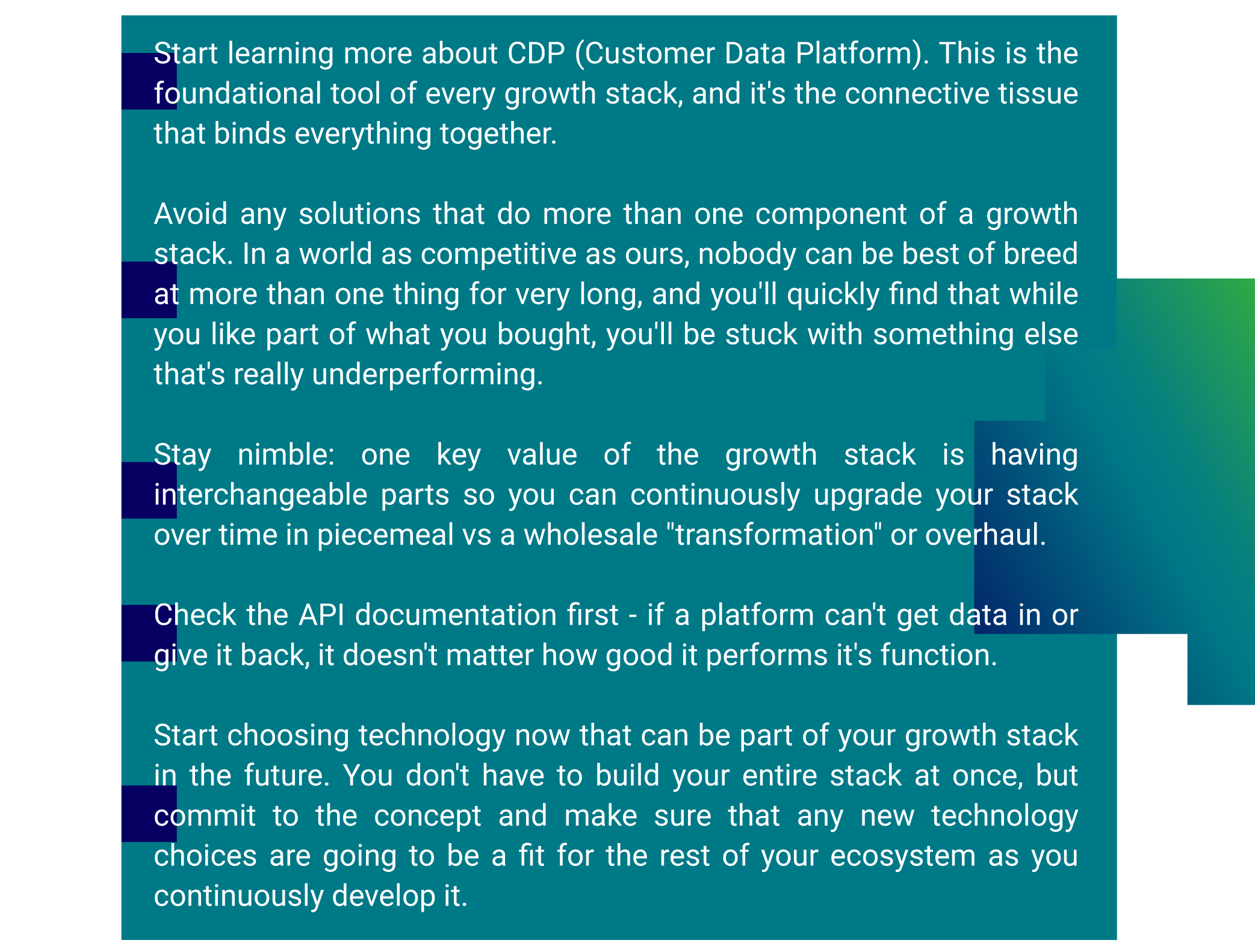At the peril of falling into useless jargon, the term “growth stack” has been catching on fast in recent years, and is on the verge of being part of our common lexicon headed into 2022. Let’s start with a definition so we can use the term in it’s proper sense vs just another “buzzword.” The term “growth stack” derives from growth hacking, which is a discipline focused on rapid growth of a user base through the use of iterative testing, analysis and optimization. The “stack” terminology comes from the development world, but effectively refers to a set of tools that work together to achieve a specific result. So, a growth stack is basically the set of tools a growth hacker or growth marketer uses with the specific focus on rapidly building their user base.

Why is this concept catching on so quickly? For one thing, it’s because the tools available have improved dramatically in the past few years, and the ability to integrate tools from across a wider digital ecosystem has taken a radical leap forward. Marketers have been dreaming of this moment for decades, and now for the first time it’s truly possible to achieve a fully-integrated ecosystem with limited customization requirements.

The key change really started almost a decade ago, but essentially companies started building products with an intentional focus on being a component of a growth stack rather than trying to be an “all-in-one” solution. Those who were insightful enough to see the near exponential diversification of the digital ecosystem came to realize that “all-in-one” is a pure fantasy, and that the alternate approach is to become a pure “best of breed” solution that could readily work with other best of breed solutions.

What this means is that a tool built for the purpose of being a component in a growth stack must first consider integration and data architecture before even thinking about the product itself. The product will be useless if it can’t both consume data it needs from other sources, and be able to deliver the data it captures and generates back to the rest of the ecosystem. Fundamentally, it’s pretty simple and it breaks down into user data, event data, campaign data and potentially some administrative data. All of that must be bilateral from the beginning, so the data architecture must allow for unstructured data of all of those types that can then be used and compiled as necessary. It must have a robust API that can ingest that data as well as export it.

So now that this new generation of technology has arrived and matured, the marketing dream of a fully-integrated digital ecosystem has become a reality. That said, here in Asia adoption has only just begun as marketing teams struggle with legacy systems, relatively high investment costs to begin building a growth stack, and a general lack of knowledge or experience in sourcing solutions and building the stack. Increasingly though, everyone is becoming aware that if they don’t start making the move now, their business will rapidly fall behind their competitors, and so the marketing technology arms race is truly heating up.
In our next piece, we’ll review some of the key players and options in the space, but in the meantime we’ll finish up here with a few tips and core principles when thinking about building a growth stack:

Building a growth stack is the path to future-proofing your business. A diversified, integrated ecosystem that and be systematically upgraded over time is the only way to prevent either falling behind or needing to undergo a whole sale overhaul down the road.





